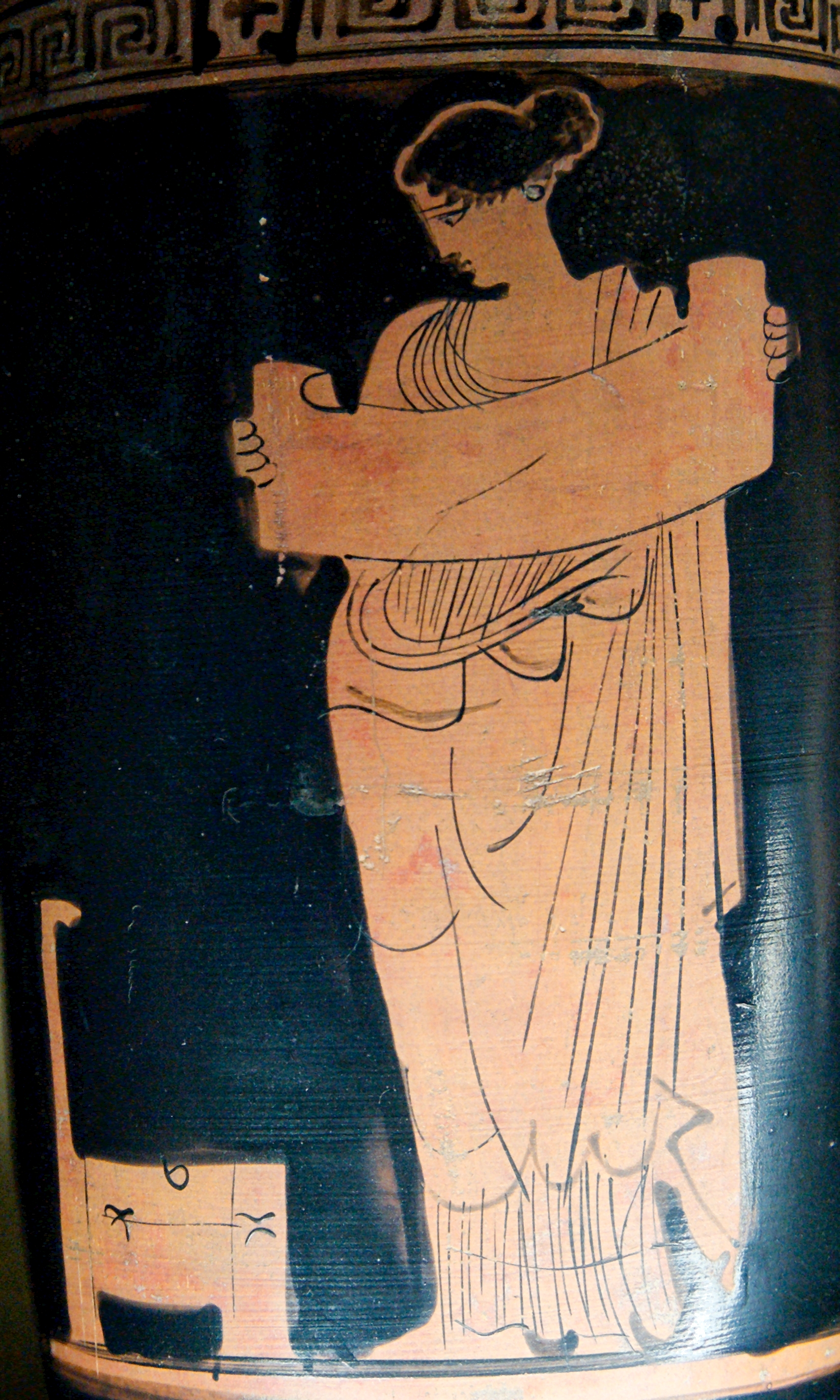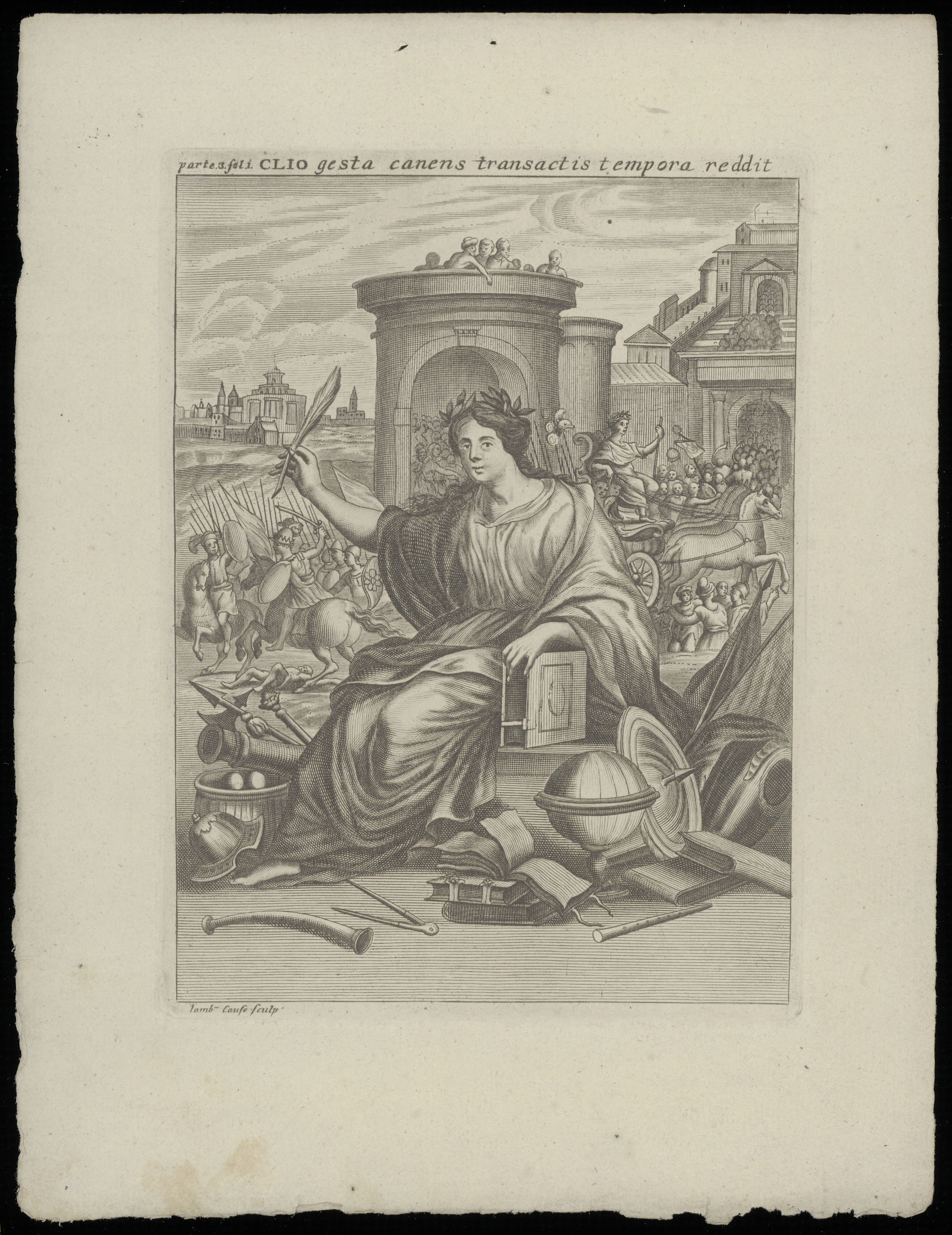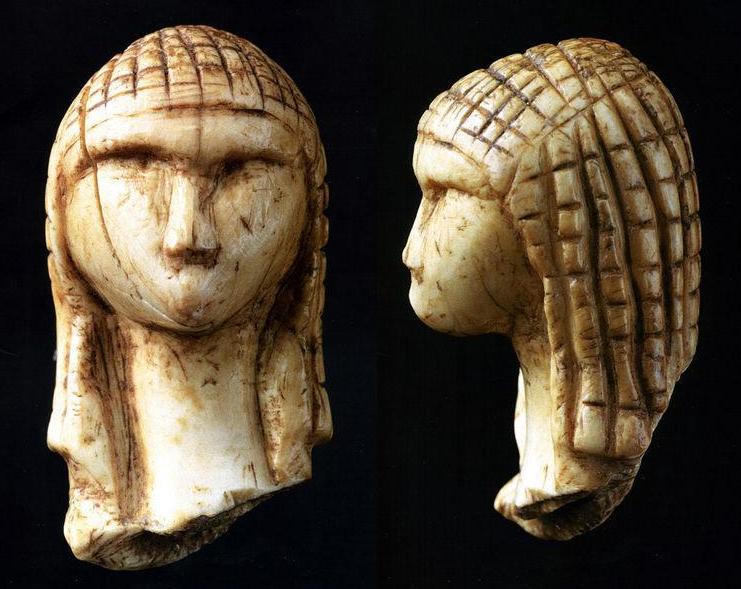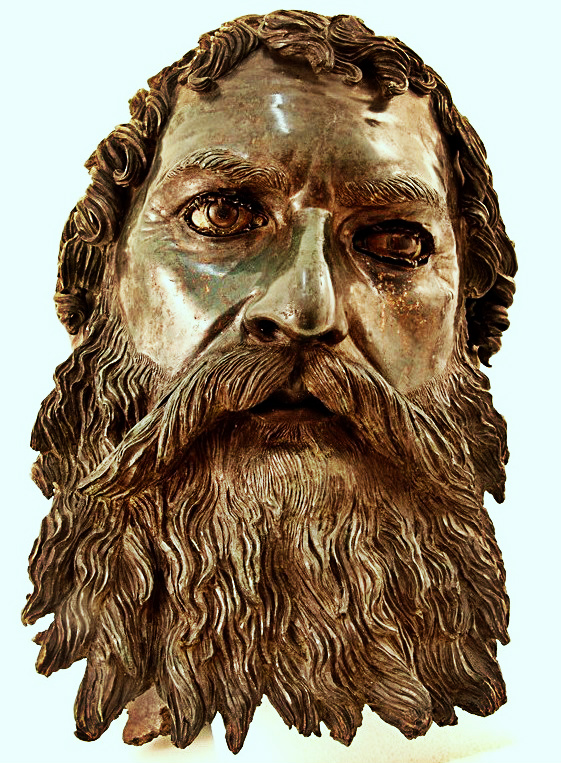|
Muse
In ancient Greek religion and Greek mythology, mythology, the Muses (, ) were the Artistic inspiration, inspirational goddesses of literature, science, and the arts. They were considered the source of the knowledge embodied in the poetry, lyric poetry, lyric songs, and myths that were related orally for centuries in ancient Greek culture. The number and names of the Muses differed by region, but from the Classical Greece, Classical period the number of Muses was standardized to nine, and their names were generally given as Calliope, Clio, Polyhymnia, Euterpe, Terpsichore, Erato, Melpomene, Thalia (Muse), Thalia, and Urania. In modern figurative usage, a muse is a Muse (source of inspiration), person who serves as someone's source of artistic inspiration. Etymology The word ''Muses'' () perhaps came from the Indo-European ablaut#Proto-Indo-European, o-grade of the Proto-Indo-European language, Proto-Indo-European root (the basic meaning of which is 'put in mind' in verb formati ... [...More Info...] [...Related Items...] OR: [Wikipedia] [Google] [Baidu] |
Euterpe
Euterpe (; , from + ) was one of the Muses in Greek mythology, presiding over music. In late Classical times, she was named muse of lyric poetry. She has been called "Giver of delight" by ancient poets. Mythology Euterpe was born as one of the daughters of Mnemosyne, Titan goddess of memory, and fathered by Zeus, god of the gods. Her sisters include Calliope (muse of epic poetry), Clio (muse of history), Melpomene (muse of tragedy), Terpsichore (muse of dancing), Erato (muse of erotic poetry), Thalia (muse of comedy), Polyhymnia (muse of hymns), and Urania (muse of astronomy). Sometimes they are referred to as water nymphs having been born from the four sacred springs on Helicon which flowed from the ground after Pegasus, the winged horse, stamped his hooves on the ground. The mountain spring Cassotis on Mount Parnassus was sacred to Euterpe and the other Muses. It flowed between two high rocks above the city of Delphi, and in ancient times its sacred waters were retain ... [...More Info...] [...Related Items...] OR: [Wikipedia] [Google] [Baidu] |
Calliope
In Greek mythology, Calliope ( ; ) is the Muse who presides over eloquence and epic poetry; so called from the ecstatic harmony of her voice. Hesiod and Ovid called her the "Chief of all Muses". Mythology Calliope had two famous sons, OrpheusHoopes And Evslin,''The Greek Gods''. , , 1995, page 77. "His father was a Thracian king; his mother the muse Calliope. For a while, he lived on Parnassus with his mother and his eight beautiful aunts and there met Apollo who was courting the laughing muse Thalia. Apollo was taken with Orpheus, gave him his little golden lyre, and taught him to play. And his mother taught him to make verses for singing." and Linus of Thrace, Linus, by either Apollo or King Oeagrus of Thrace. She taught Orpheus verses for singing. According to Hesiod, she was also the wisest of the Muses, as well as the most assertive. Calliope married Oeagrus in Pimpleia, a town near Mount Olympus. She is said to have defeated the daughters of Pierus (king of Macedonia), Pie ... [...More Info...] [...Related Items...] OR: [Wikipedia] [Google] [Baidu] |
Clio
In Greek mythology, Clio ( , ; ), also spelled Kleio, Сleio, or Cleo, is the muse of history, or in a few mythological accounts, the muse of lyre-playing. Etymology Clio's name is derived from the Greek root κλέω/κλείω (meaning "to recount", "to make famous" or "to celebrate"). The name's traditional Latinisation is Clio, Lewis and Short, ''A Latin Dictionary: Founded on Andrews' Edition of Freund's Latin Dictionary: Revised, Enlarged, and in Great Part Rewritten by Charlton T. Lewis, Ph.D. and Charles Short, LL.D''. The Clarendon Press, Oxford, 1879, ''s.v.'' but some modern systems such as the American Library Association-Library of Congress system use ''K'' to represent the original Greek '' kappa'', and ''ei'' to represent the diphthong ''ει'' ( epsilon iota), thus ''Kleio''. Depiction Clio, sometimes referred to as "the Proclaimer", is often represented with an open parchment scroll, a book, or a set of tablets. She is also shown with the heroic trum ... [...More Info...] [...Related Items...] OR: [Wikipedia] [Google] [Baidu] |
Muse (source Of Inspiration)
A muse is a person with the natural ability to inspire others along with the education and experience to guide them to achieve their true objective. In the course of history, these have usually (but not necessarily) been women. The term is derived from the Muses, ancient Greek goddesses of inspiration. Human muses are woven throughout history. In modern times, specific people are called muses; as a rule, these are close friends and sometimes lovers or spouses, who inspire or affect the works of an artist due to their disposition, charisma, wisdom, sophistication, eroticism, intimate friendship, or other traits. Sometimes muses directly provide models for specific paintings and sculptures and for characters in literary works, but sometimes not, rather providing inspiration for the artist's work as a whole. Muses are distinct from persons who may organize, teach, befriend, marry or support artists without providing inspiration for their works. Persons who serve only as models for p ... [...More Info...] [...Related Items...] OR: [Wikipedia] [Google] [Baidu] |
Urania
Urania ( ; ; modern Greek shortened name ''Ránia''; meaning "heavenly" or "of heaven") was, in Greek mythology, the muse of astronomy and astrology. Urania is the goddess of astronomy and stars, her attributes being the globe and compass. The muse ''Urania'' is sometimes confused with '' Aphrodite Urania'' ("heavenly Aphrodite") because of their similar name. Family Urania was the daughter of Zeus by Mnemosyne and also a great-granddaughter of Uranus. Some accounts list her as the mother of the musician Linus by Apollo or Hermes or Amphimarus, son of Poseidon. Hymenaeus is also said to have been a son of Urania. Function and representation Urania is often associated with Universal Love. Sometimes identified as the eldest of the divine sisters, Urania inherited Zeus' majesty and power and the beauty and grace of her mother Mnemosyne. Urania dresses in a cloak embroidered with stars and keeps her eyes and attention focused on the Heavens. She is usually represented ... [...More Info...] [...Related Items...] OR: [Wikipedia] [Google] [Baidu] |
Melpomene
Melpomene (; ) is the Muse of tragedy in Greek mythology. She is described as the daughter of Zeus and Mnemosyne (and therefore of power and memory) along with the other Muses, and she is often portrayed with a tragic theatrical mask. Etymology Melpomene's name (implying the meaning "Songstress") is derived by etymologists from the Ancient Greek verb (''melpô'') or from its inflexion μέλπομαι (''melpomai'') meaning "to celebrate with dance and song". The Oxford English Dictionary cites μέλπειν (''melpein'' – to sing). Myth Melpomene is one of the nine Muses, the Muse of tragedy. Hesiod, Pseudo-Apollodorus, Apollodorus, and Diodorus Siculus all held that Melpomene was the daughter of Zeus and Mnemosyne. She was the sister of the other Muses, Calliope, Clio, Erato, Euterpe, Polyhymnia, Terpsichore, Thalia (Muse), Thalia, and Urania. Apollodorus, Lycophron, and Gaius Julius Hyginus said that Melpomene was the mother of the Siren (mythology), sirens, though so ... [...More Info...] [...Related Items...] OR: [Wikipedia] [Google] [Baidu] |
The Arts
The arts or creative arts are a vast range of human practices involving creative expression, storytelling, and cultural participation. The arts encompass diverse and plural modes of thought, deeds, and existence in an extensive range of media. Both a dynamic and characteristically constant feature of human life, the arts have developed into increasingly stylized and intricate forms. This is achieved through sustained and deliberate study, training, or theorizing within a particular tradition, generations, and even between civilizations. The arts are a medium through which humans cultivate distinct social, cultural, and individual identities while transmitting values, impressions, judgments, ideas, visions, spiritual meanings, patterns of life, and experiences across time and space. The arts are divided into three main branches. Examples of visual arts include architecture, ceramic art, drawing, filmmaking, painting, photography, and sculpture. Examples of literature i ... [...More Info...] [...Related Items...] OR: [Wikipedia] [Google] [Baidu] |
Science
Science is a systematic discipline that builds and organises knowledge in the form of testable hypotheses and predictions about the universe. Modern science is typically divided into twoor threemajor branches: the natural sciences, which study the physical world, and the social sciences, which study individuals and societies. While referred to as the formal sciences, the study of logic, mathematics, and theoretical computer science are typically regarded as separate because they rely on deductive reasoning instead of the scientific method as their main methodology. Meanwhile, applied sciences are disciplines that use scientific knowledge for practical purposes, such as engineering and medicine. The history of science spans the majority of the historical record, with the earliest identifiable predecessors to modern science dating to the Bronze Age in Ancient Egypt, Egypt and Mesopotamia (). Their contributions to mathematics, astronomy, and medicine entered and shaped the Gree ... [...More Info...] [...Related Items...] OR: [Wikipedia] [Google] [Baidu] |
Poetry
Poetry (from the Greek language, Greek word ''poiesis'', "making") is a form of literature, literary art that uses aesthetics, aesthetic and often rhythmic qualities of language to evoke meaning (linguistics), meanings in addition to, or in place of, Denotation, literal or surface-level meanings. Any particular instance of poetry is called a poem and is written by a poet. Poets use a variety of techniques called poetic devices, such as assonance, alliteration, Phonaesthetics#Euphony and cacophony, euphony and cacophony, onomatopoeia, rhythm (via metre (poetry), metre), and sound symbolism, to produce musical or other artistic effects. They also frequently organize these effects into :Poetic forms, poetic structures, which may be strict or loose, conventional or invented by the poet. Poetic structures vary dramatically by language and cultural convention, but they often use Metre (poetry), rhythmic metre (patterns of syllable stress or syllable weight, syllable (mora) weight ... [...More Info...] [...Related Items...] OR: [Wikipedia] [Google] [Baidu] |
Thracians
The Thracians (; ; ) were an Indo-European languages, Indo-European speaking people who inhabited large parts of Southeast Europe in ancient history.. "The Thracians were an Indo-European people who occupied the area that today is shared between Thrace, north-eastern Greece, Romania, and north-western Turkey. They shared the same language and culture. There may have been as many as a million Thracians, divided among up to 40 tribes." Thracians resided mainly in Southeast Europe in Present (time), modern-day Bulgaria, Romania, North Macedonia, northern Greece and European Turkey, but also in north-western Anatolia, Anatolia (Asia Minor) in Turkey. The exact origin of the Thracians is uncertain, but it is believed that Thracians like other Indo-European speaking groups in Europe descended from a mixture of Proto-Indo-Europeans and Early European Farmers. Around the 5th millennium BC, the inhabitants of the eastern region of the Balkans became organized in different groups of Indi ... [...More Info...] [...Related Items...] OR: [Wikipedia] [Google] [Baidu] |
Ancient Greek Religion
Religious practices in ancient Greece encompassed a collection of beliefs, rituals, and Greek mythology, mythology, in the form of both popular public religion and Cult (religious practice), cult practices. The application of the modern concept of "religion" to ancient cultures has been questioned as anachronistic. The Ancient Greece, ancient Greeks did not have a word for 'religion' in the modern sense. Likewise, no Greek writer is known to have classified either the gods or the cult practices into separate 'religions'. Instead, for example, Herodotus speaks of the Hellenes as having "common shrines of the gods and sacrifices, and the same kinds of customs". Most ancient Greeks recognized the Twelve Olympians, twelve major Olympian gods and goddesses—Zeus, Hera, Poseidon, Demeter, Athena, Ares, Aphrodite, Apollo, Artemis, Hephaestus, Hermes, and either Hestia or Dionysus—although philosophies such as Stoicism and some forms of Platonism used language that seems to assume a s ... [...More Info...] [...Related Items...] OR: [Wikipedia] [Google] [Baidu] |








